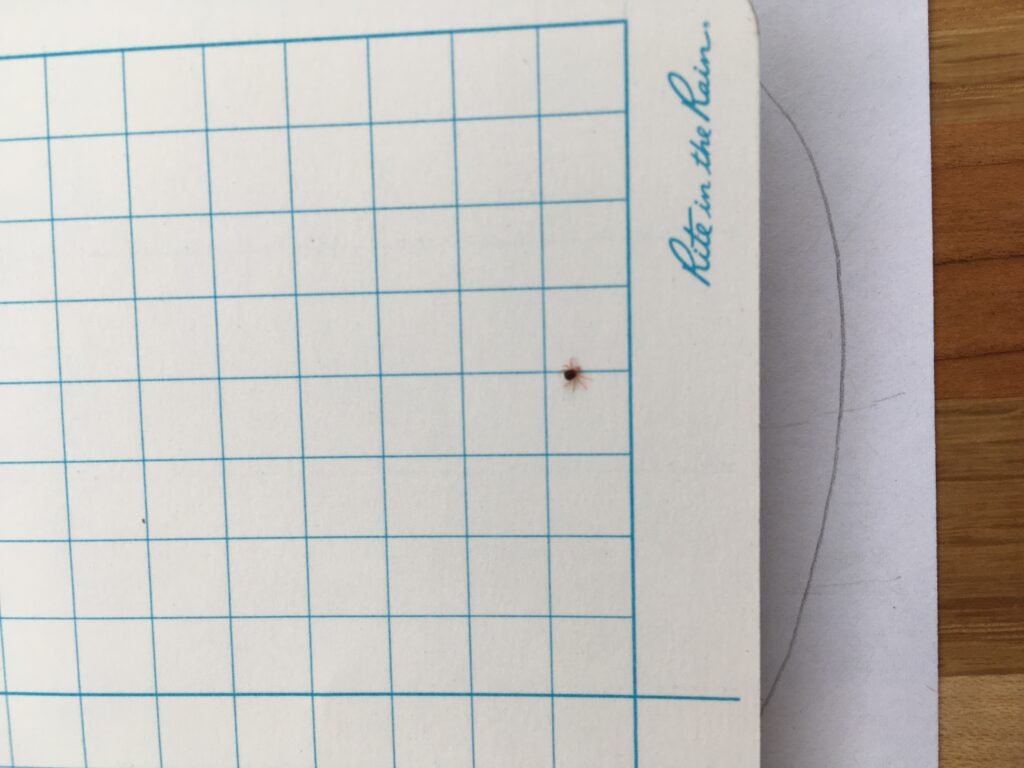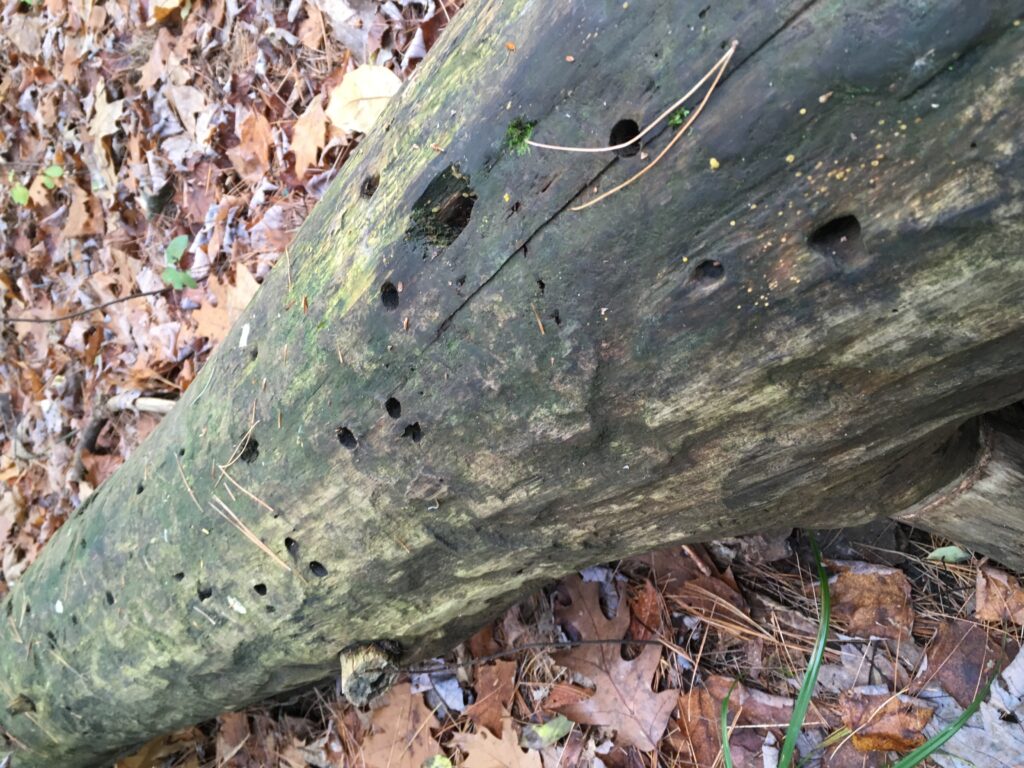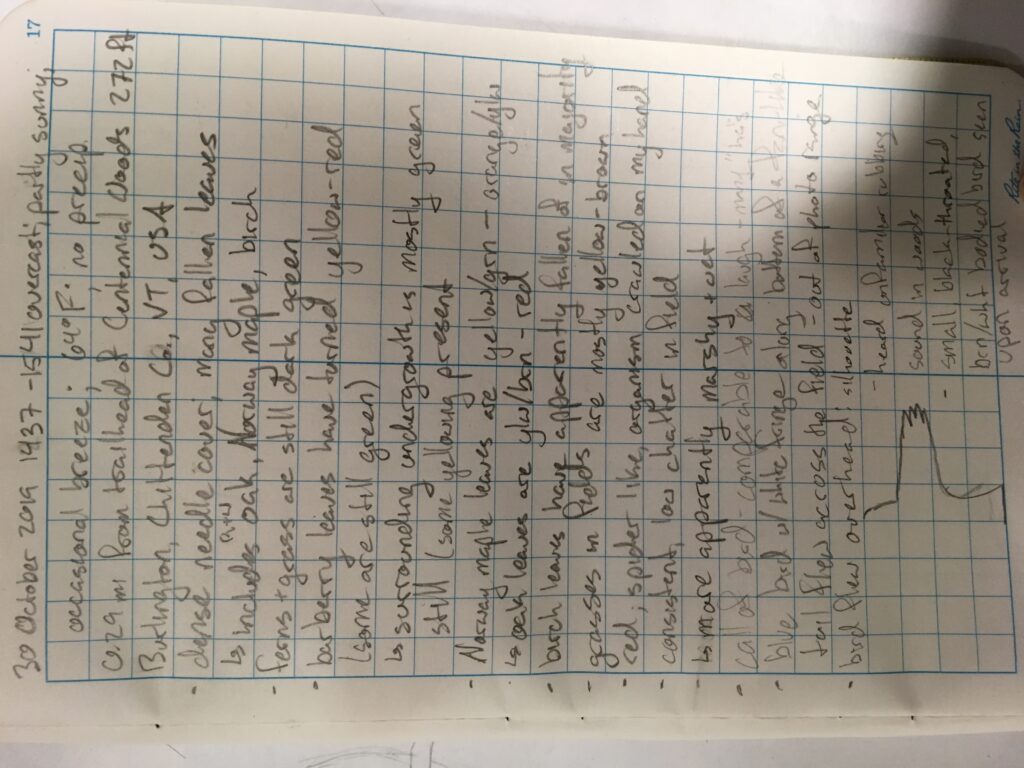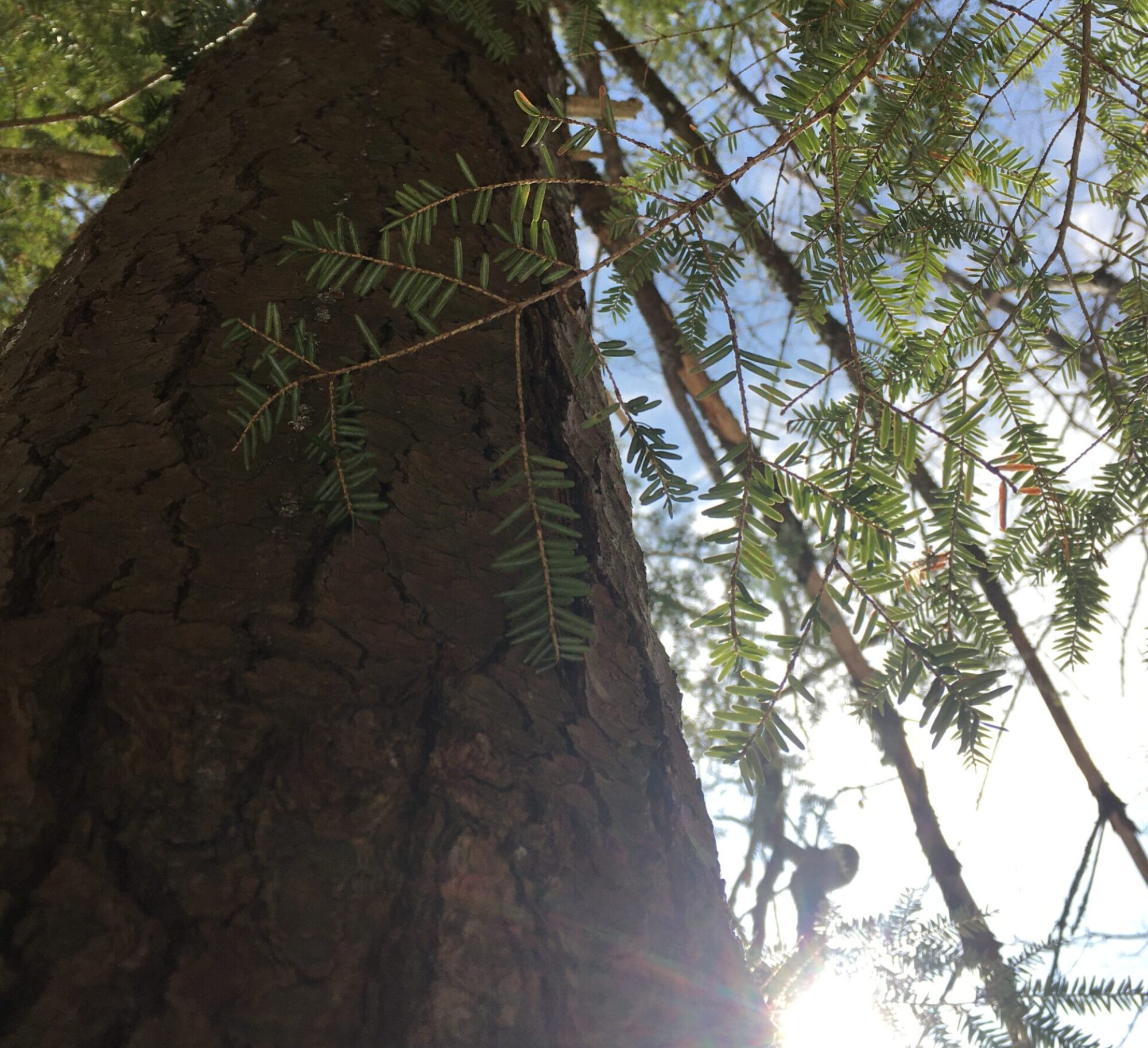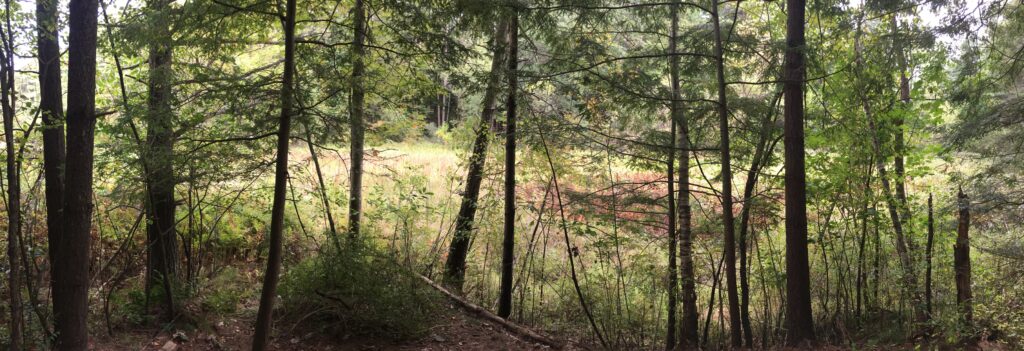During my hour-long visit to my phenology site in Centennial Woods, I was able to hear (and occasionally see) some of the organisms nearby. At the beginning of my visit, I was able to identify a black-throated bird with a brownish white underbelly. From my previous visit I was able to identify this as a Black-capped Chickadee (Poecile atricapillus). Additionally, I spotted a blue bird with a white fringe along the bottom of its tail fly across the field; it was likely a Blue Jay (Cyanocitta cristata) but it was too far away for me to tell for sure. Briefly, I viewed a bird with a silhouette similar to what is drawn in my field notes; my drawing and observation skills are too underdeveloped to identify the exact type of bird, but it was likely from the Order Falconiformes. As heard in the audio sample, there was another bird which I did not see that made a call I have not heard on previous visits to my site and I can only say the call’s owner belongs in Phylum Chordata. I also heard a rubbing sound that presumably came from an organism in Subphylum Hexapoda or at least in Phylum Arthropoda. I also befriended a Clover Mite (Bryobia praetiosa) who crawled around on my hand and journal for quite some time. At the fallen log which intersects the trail at one point (seen on the included map), I noticed some holes bored into the rotting, wet wood. I am unsure if these marks were left by a chordate or an insect. Due to the number of Black-capped Chickadees I have seen during my visits, I would imagine that these birds are often found in Centennial Woods, perhaps year-round. Birds might be quite active in Centennial Woods (and thus around my phenology site) at this time of year because they are finding, consuming, and/or storing food to prepare for overwintering or migrating. Other insects and arthropods might be out looking for food as well as mates at this time of year. This would explain the distinct rubbing in the included audio clip as well as the general hum of a collection of insects (or arthropods presumably) in the field adjacent to my phenology place.
Since my previous visit, the generally needle-covered ground has become more littered with fallen leaves, especially those from birches, oaks, and maples. The Norway Maple to my left (as I look out upon the field) still hangs onto its leaves, although they are yellow-green to orange-yellow now (they were very green during my last visit). The leaves still attached to the oak trees are yellow-brown and red. The low undergrowth (ferns and grasses) are still green and show no signs of yellowing; some of the shrubby undergrowth bears green leaves while others completely lack leaves. Of particular note, the Barberry bushes, which are quite plentiful in this area, are displaying leaves in shades of red, orange, and yellow. In the field, the grasses are mostly yellow and brown, showing little of the green seen in prior visits.
As previously noted, the field, which was more apparently wet during this visit, is lower in elevation relative to the surrounding upward slopes on the east and west. In the north and the south, the land seems more low-lying; perhaps this provides a channel/direction for water to flow. The soil in the spot upon which I sat was damp. The needles that littered the ground likely promote an acidic soil, but there are also many leaves from deciduous trees that contribute to the organic layer of the soil and may influence pH too.
Mapping this site, which from now on I will call the Projection, proved difficult – it’s hard to capture a bird’s-eye view from the ground – but it did provoke me to take a look at the more static aspects of my surroundings, such as some significant dead trees and stumps. It was also enlightening to assess the topography of the area surrounding the Projection; it gave me an idea of where and how water might flow (or not flow) in and out of the area. I wonder what processes created this distinct geographic outcrop…
